Ill-Gotten Treasures of Ancient Crimea Are Flooding eBay

Ruins of ancient Greek colony of Chersonesos, in Crimea. (Photo: Burliai /WikiCommons CC BY-SA 3.0)
When Russia annexed Crimea in 2014, shells dropped, bullets flew, and international borders were effectively redrawn. Cultural heritage also fell under siege. UNESCO reported that the “massive transfer of priceless cultural objects from Crimean museums to the Russian capital is alarming.” There have been flurries of posts on Twitter, linking back to auction sites hawking ancient Crimean coins.
It’s difficult to pinpoint exactly where such coins came from, by what means, how long they’ve been in circulation, and whether they’re even authentic. Even so, Evelina Kravchenko, a Ukrainian archaeologist working in Kiev, believes that they and others like them likely “come from extortionate digging in Crimea,” adding bitterly, “Russia does nothing to control this process.” (Not surprisingly, a click on one of these Twitter links comes with a warning that the link may be unsafe).
Extortionate digging has been happening on the Black Sea peninsula for more than a hundred years, since the days when archaeology was just becoming professionalized, and collecting was seen as a legitimate way of expanding and sharing knowledge of the past. When the Soviet Union imploded, a black market for antiquities was born. In a region that’s filled with the treasures of foreign invaders, private collections surged as demand fueled greater supply.
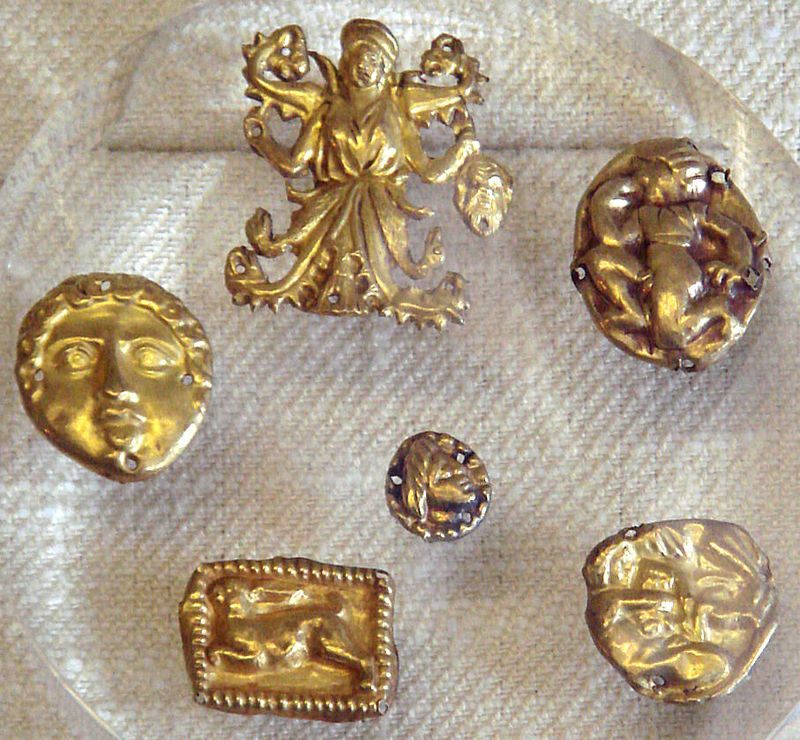
Scythian treasure from Kul-Oba, an ancient archeological site in Eastern Crimea. (Photo: PHGCOM/WikiCommons CC BY-SA 3.0)
These days, the on-going conflict between Ukraine and Russia has turned Crimea’s archaeological sites and gems–from ancient Greek cities to Roman and Byzantine ruins–into flashpoints for geopolitical struggles, bringing cultural heritage and power into very close alignment. Who ends up owning these objects is key.
Just as conflict fuels the market, a national exhibition, and who controls which ruin, have become important political symbols, assertions of sovereignty. Orwell’s dictum, “He who owns the past controls the future,” is playing out across archaeological sites and museums from the Netherlands to Moscow.
A new exhibit at the Hermitage Museum in St. Petersburg is just the latest example. Titled “In the Land of the Gryphon, The Hermitage Antique Archaeology Collection in The Crimea,” the show evokes a mythical creature that’s part eagle, part lion, and displays objects from the museum’s extensive collection, including jugs, the remains of an ancient theater, and coins, many of which were collected over the course of the last two decades as well as the Soviet period.
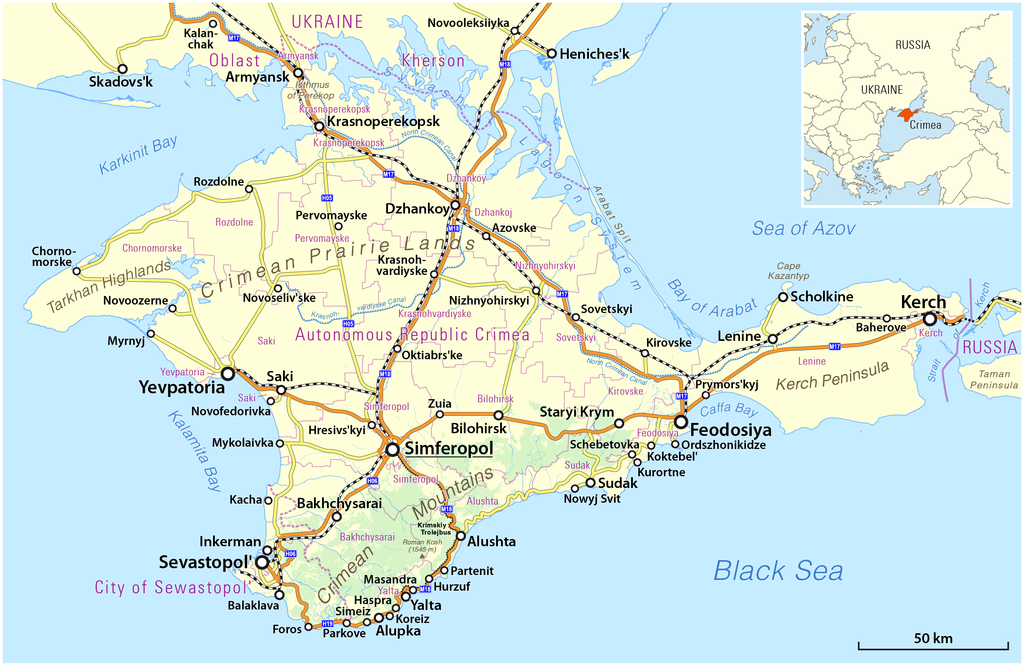
A map of Crimea. (Photo: Maximilian Dörrbecker/WikiCommons CC BY-SA 2.0)
On the website, the language describing the show is scholarly, nuanced, and absent of nationalistic rhetoric. Still, that such an exhibit exists at all has thrown enflamed concerns in certain archaeological circles.
“It’s quite normal that it can organize an exhibition on this topic,” says Thibaut Castelli, a historian in Paris who writes about Crimea’s cultural heritage. Yet in light of the current political context, Castelli sees the exhibit as an important political signal, showing that “Crimea is Russia.”
Castelli points to other signals like it, including Putin’s recent visit to the ancient site of Chersonesus with former Italian Prime Minister Silvio Berlusconi–Chersonesus recently made international headlines when the director of its museum was controversially outed for a Russian appointee–and Putin’s underwater dive to explore an ancient shipwreck off the Crimean coast. Castelli called these widely publicized events “important political gestures.”
St. Vladimir’s Cathedral overlooks the extensive excavations of Chersonesus, on the Crimean Peninsula. (Photo: Dmitry A. Mottl/WikiCommons CC BY-SA 3.0)
Others take a harsher view. In the wake of what happened to the Museum of Donetsk (badly damaged by fighting in the summer of 2014, there are reports that some of its collections “disappeared”), and the fact that Putin has just placed Chersonesus under Russian federal control, making it difficult for Ukranian archaeologists to continue their work there, mistrust over who’s watching over these sites, and the flow of objects in and out of them, is strong.
Fair or not, some archaeologists are concerned that the exhibition at The Hermitage may reflect violations of current international protocols.
“Relevant international laws explicitly forbid any archaeological excavations in the occupied territories by the state-invader,” said Yakov Gershkovich, a Senior Research Fellow of Institute of Archaeology of Ukrainian Academy of Sciences, who has studied this topic extensively. “Any export of archeological finds from occupied territories is forbidden by the international conventions. This exhibition demonstrates that Russian archaeologists infringe the rule of international law and norms of professional ethics. Unfortunately, I haven’t other explanations.”
The Hermitage Museum did not respond to a request for comment.
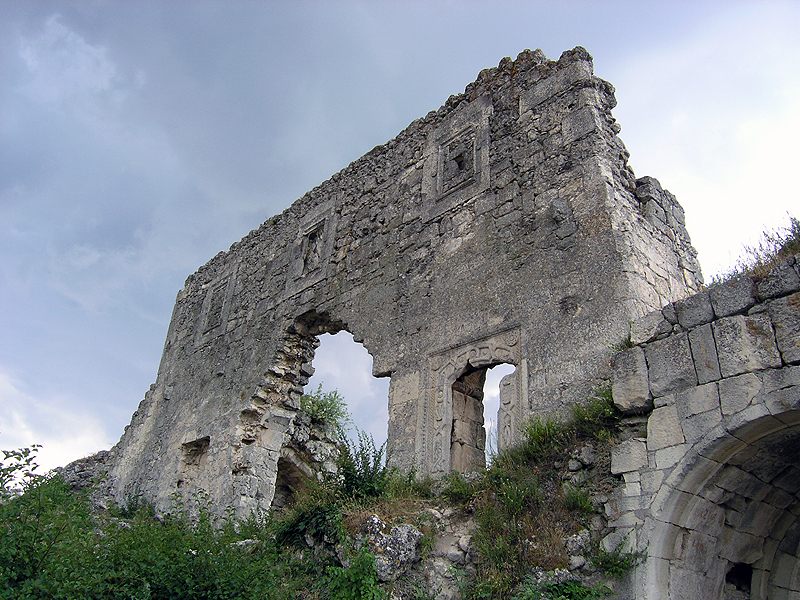
Mangup, a historic fortress in Crimea. (Photo: Elena Pleskevich/flickr)
In a symbol of just how deep this mistrust is among Ukrainian archaeologists, and how protective they are of their heritage, the All-Ukrainian Public Association of Archaeologists was founded in 2010 to care for the “destiny of archaeological heritage,” and protect it from threat of destruction by natural factors, economic activities, and racial, ethnic, and religious conflicts. While the name of the association has a nationalistic ring to it, Gershkovich, who serves as its vice president, says the association welcomes archaeologists of all nationalities living in the Ukraine, and that he himself is Jewish. The association’s goals were born of past political conflicts. These days, some Ukrainian archaeologists are refusing to work on Crimean sites under Russian control, even when they’re able to.
“In theory, Russia allows them to work on the sites, on a team directed by Russia,” Castelli explains. “One or two have done it, but the majority of Ukrainian archaeologists wouldn’t accept this because it will be accepting the loss of Crimea.”
Meanwhile, other Ukrainian archaeologists face more literal bars to access. For instance, Evelina Kravchenko says a site that she formerly worked on has become a military base, making it impossible, at least for the time being, to work there. This comes at a moment when Russia is building a bridge to Crimea, despite protests by archaeologists that its construction is a threat to Phanagoria, an important archaeological site nearby.

A tomb showing a griffin, excavated from Phanagoria, and currently in a museum in Feodosiya, Crimea. Phanagoria is an important archaeological site that is close to the bridge Russia is building to Crimea. (Photo: Janmad/WikiCommons CC BY-SA 3.0)
Speaking of another recent skirmish, involving Crimean cultural objects that were “held hostage by politics” at a museum in Amsterdam, the museum’s director told the New York Times that “the Crimean case is illustrating in a very strong way that objects of cultural heritage can be claimed from a political perspective.”
Political perspectives have also claimed some of the information itself, as in the case of reports on the Donetsk museum (“for this topic, you have to be careful about propaganda and disinformation from all parts implicated in this conflict,” Castelli warned via Skype). For Gershkovich, Putin’s recent photo opps fall into this category too: “It’s part of an effort to propagandize the idea of Crimea as special sacral place for modern Russia (especially as it concerns Chersonesus). One can see the myth-making is in the process,” he says.
Then Gershkovich took a step back, as though assessing his own analysis: “One may say that Russia is a political and war offender, but extortionate digging has been happening in Crimea for a while.” Striking a more defiant note, he adds: “Whether there has been an increase in illegal digging in Crimea, we will know when Crimea becomes Ukrainian territory again.”

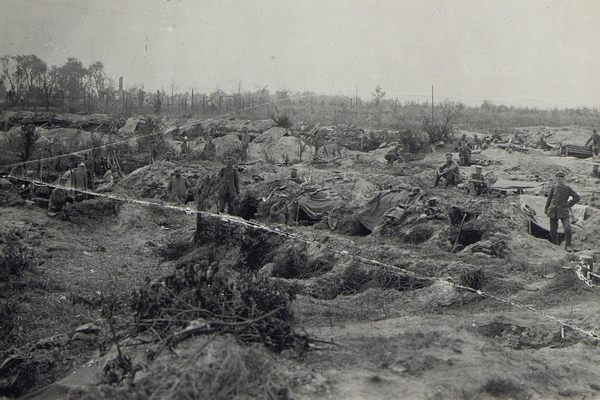
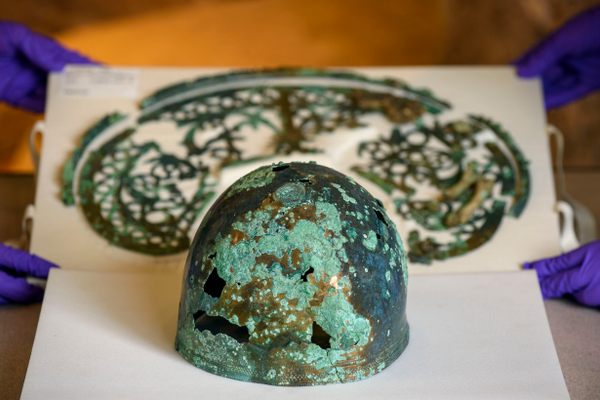













Follow us on Twitter to get the latest on the world's hidden wonders.
Like us on Facebook to get the latest on the world's hidden wonders.
Follow us on Twitter Like us on Facebook